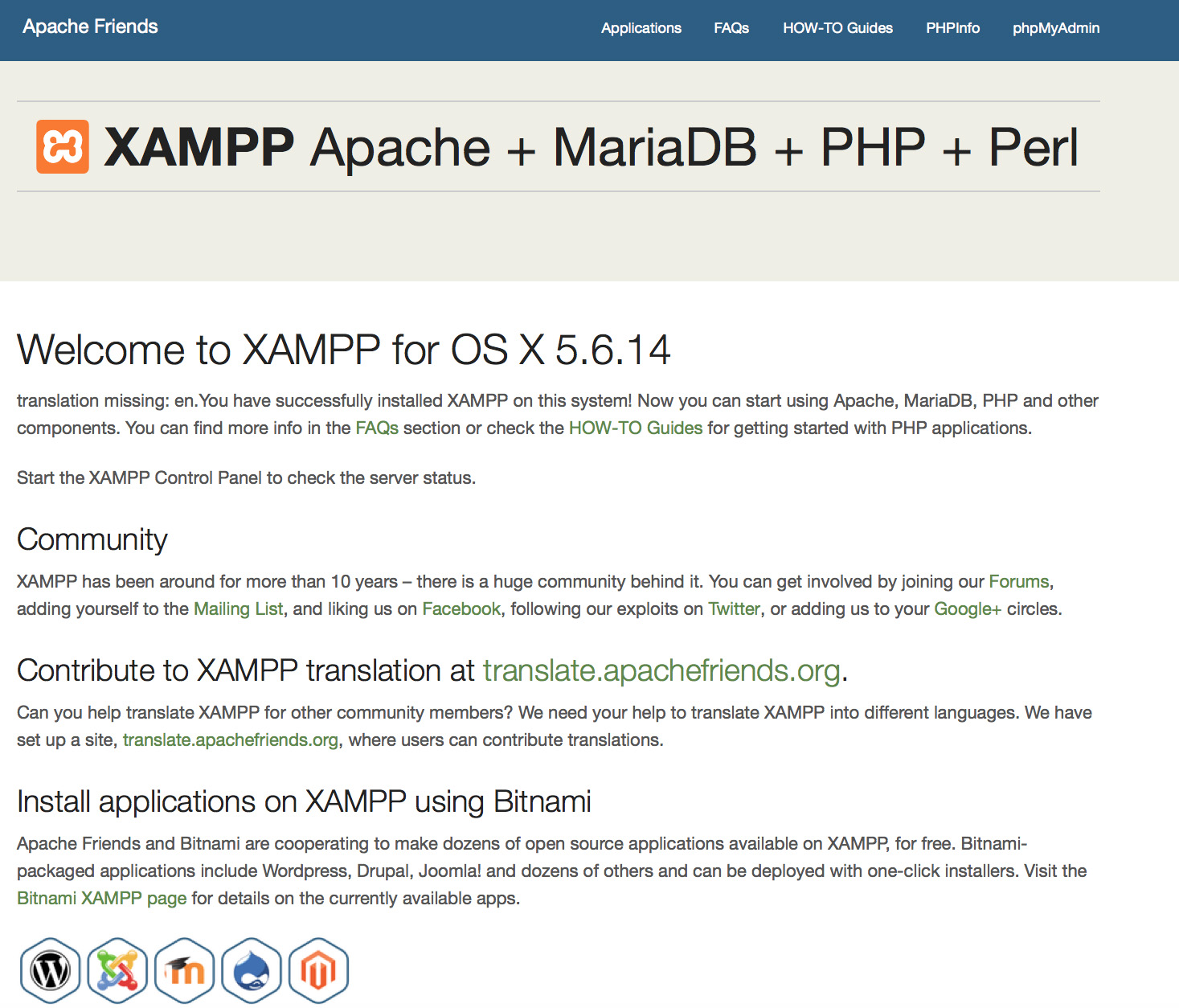
There’s a few tweaks you need to make to the Apache config before moving forward: Main config nf #įind and edit the nf file in the etc folder, and uncomment the line containing #Include etc/extra/nf by removing the #.

Click on the etc folder here, then go to the next section. If you clicked Explore, Finder should open to the location where the XAMPP server config is available to browse. Next you want to click on the Volumes tab at the top, then Mount, then Explore once the Mount button is greyed out. First thing you want to do is click the Start button here this fires up the VM and gets the server running so we can complete the rest of the configuration. You should be presented with the application containing some buttons and an empty “status” area. Once installed, run XAMPP.app from the Applications folder.

Bundled inside it is Apache (a web server), MariaDB (an open source MySQL-compliant database server), PHP (a server-side programming language), and Perl (a programming language that many people love). XAMPP is a suite of tools delivered to you as a single package that you download and install on your computer. You could just open the Terminal.app and type php index.php which would run your file through the built-in php interpreter, but let’s say you want to view it in your web browser how do you do that? Well, this is where XAMPP comes in. If you’re someone just getting started with web development and you’re leveling up your learning to include PHP and other server-side languages, and you have an Apple Mac product of some kind running macOS 10.15, it’s very likely that you’ve ran into a wall trying to get your first index.php file to run.


 0 kommentar(er)
0 kommentar(er)
